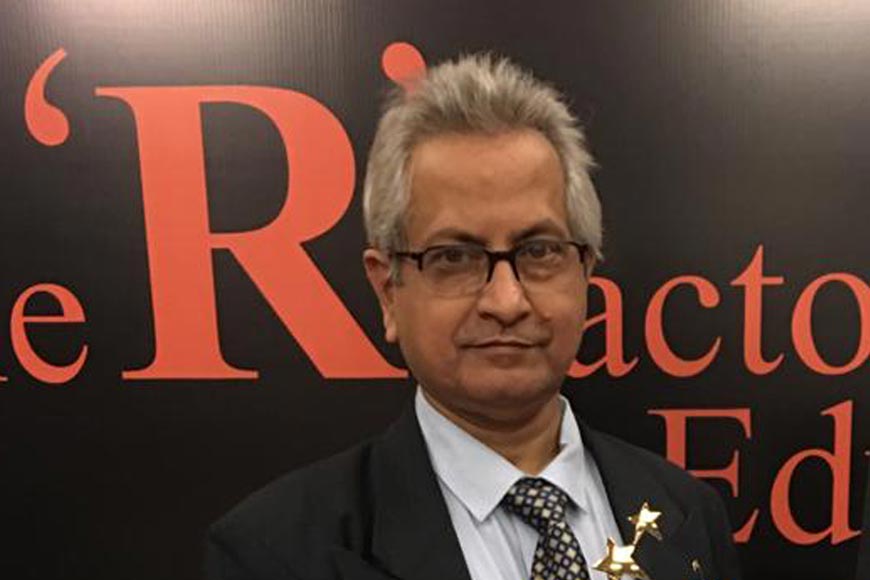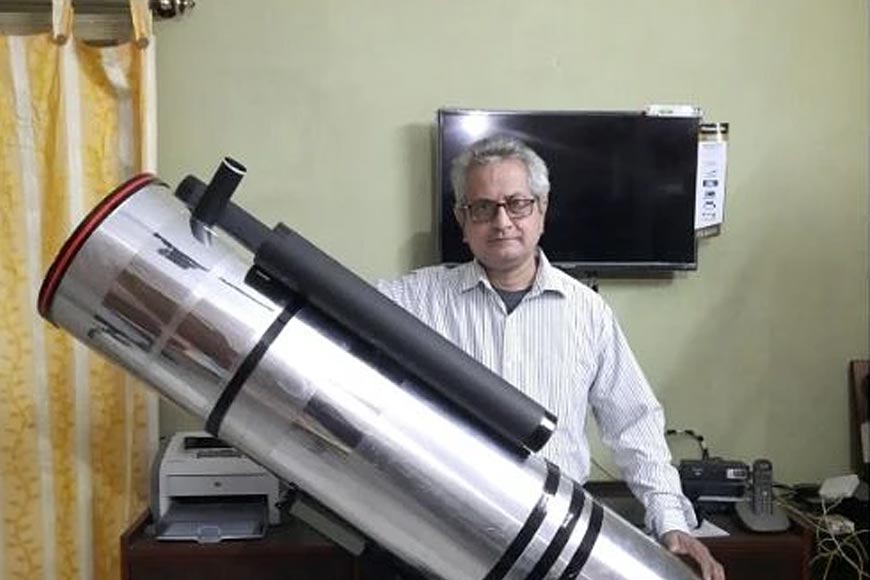Kolkata Physicist makes path breaking Solar Particle Detector to detect Sun’s Corona

The COVID-19 pandemic is the defining global health crisis of our time and the greatest challenge we have faced since World War II. The virus’ namesake, the Sun’s corona is far more formidable and menacing than the living organism. And now Kolkata’s International award-winning acclaimed Physicist Dr Ramendra Lal Mukherjee has accomplished the impossible in tracing the Sun’s Corona.
The outermost layer of the Sun is perpetually in a state of flux. Extreme temperatures, sometimes massive explosions, solar storms and powerful solar particles rush towards the Earth at breakneck speed. The corona of the Sun cannot be seen with naked eyes because its density is very low and the photosphere is excessively bright. The chromosphere, thus, can be only seen during a complete solar eclipse when the moon hides the photosphere and makes way for the reddish chromosphere to be seen.
About 80 years ago, scientists discovered that the temperature of the solar corona is actually much hotter than the surface, at a few million degrees Celsius. The high temperatures of the corona cause it to expand into space as a continuous outflow of plasma called the solar wind. The Sun's corona extends millions of kilometres into outer space and can be seen at the solar observatory with a device called coronagraph. But it is not yet capable of capturing its true essence.

Mukherjee’s super telescope makes star gazing more exciting and fruitful. Using different grades of grinding powder, he has created sophisticated lenses from glass panels used for doors. A Mumbai-based firm developed the coating for the lenses which now fit into the over five-feet-long 12-inch diameter 1600-mm (focal length) telescope and christened it Solar Particle Detector. With this telescope, minute details of Venus can be traced just as one can explore the Milky Way, the Andromeda galaxy and the distant universe.
After decades of observations of solar energetic particles from space-based observatories, relevant questions on particle injection, transport, and acceleration remain open. To address these scientific topics, accurate measurements of the particle properties in the inner heliosphere are needed. Dr Mukherjee has recorded myriad photographs of the Sun’s corona through his Solar Particle Detector. The Sun’s photographs taken from his equipment are not only unique but are also far more detailed than the photographs recorded at the Solar Observatory. “I have been working on this Solar Particle Detector since 2012. This instrument can capture the Sun’s different layers in multiple ways in much more detailed way than is seen and clicked at observatories. My approach is unconventional and my instrument has a much wider range. The project is not complete yet and I am still fine-tuning the nitty-gritty of the telescope. Once I complete that, I am confident that with my breakthrough invention, astronomers will be able to explore the unknown facets of the Sun and it will usher in an epoch-making change in the study and observation of the galaxy.”
Dr Mukherjee hails from Shibpur, Howrah. His world revolves around his workshop, laboratory and his quest for invention. During lockdown, when he was stranded at home, he continued his research work, looking for new facades of the Sun. Dr Mukherjee has 30 international patents for instruments ranging from a device that can help detect skin diseases to a super telescope and a UV emitting device that kills microbes. He has invented the Portable Multipurpose OPEC Analyzer, to diagnose skin cancer and other skin diseases/ infections. The Union government patented the device last year. In 1998, he invented the Micro-microscope for which he received a national award in 2002. The World Intellectual Property Organization in Geneva also honoured him for the microscope in the same year. He also invented 3D Transmission Electronic Microscope and 3D Scanning Electronic Microscope. He is the inventor of multiple research instruments including ENT Analyzer, Autoscope and Stone Analyzer. He is now gearing up to present his Solar Particle Detector before a national and international scientific community. This path-breaking device could open the floodgates of knowledge, making it easier to study the Sun and crack its myriad mysteries. “There will be no need to spend trillions of dollars on solar research in the future. With the help of the indigenously made Solar Particle Detector device, Indian scientists will be able to do more in-depth and focused research on solar science,” feels Dr Mukherjee.
Dr Mukherjee has set his eyes on viewing the big wide universe beyond our blue dot. The stars beckon him, but he is already a star among stars in his own right.










